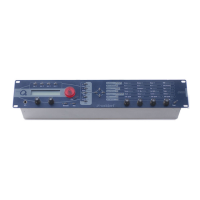Sound Parameters – Oscillator Section
65 Waldorf microQ User´s Manual
02 FM Src (FM Source) see Table “FM Sources”
Selects the source for the frequency modulation of oscillator 2.
02 FM Amt (FM Amount) 0...127
Please read the "FM" in the chapter "Oscillator Parameter Controls" on page 60.
FM requires a lot of CPU Power, which can lead to decrease polyphony.
02 Sync off / on
Enables or disables oscillator synchronization. When enabled, Oscillator 2 acts as a slave that is
controlled by Oscillator 3, the master. Each time Oscillator 3 starts a new cycle, it sends a trigger
signal to Oscillator 2, forcing it to restart its waveform cycle, too. As a result, interesting sound effects
may be generated, especially when both oscillators are operating at different pitch settings. Using
additional pitch modulation by envelopes, LFO, or Pitch bend will lend further movement to sync
sounds. The following picture illustrates the principle of oscillator synchronization in a simplified
way:
This oscillator synced to this oscillator results in this wave
new cycle of master oscillator
Picture 13: Oscillator Sync
Use Sync for Lead or Solo sounds. Set Oscillator 2 to play one octave and 7 semitones higher,
apply an envelope to its pitch with positive amount and you get a screaming sync sound.
Sync can also be very interesting on arpeggio sounds. Apply a slow clocked LFO to Oscillator
2 pitch and the arpeggio starts to move.
03 Keytrk (Keytrack) -200%...+197%
Determines how much the pitch of the oscillator 3 depends on the MIDI note number. For more
information please refer to "01 Keytrk".
03 BendRg (Bendrange) -24…+24
Determines the intensity of the pitchbend via MIDI Pitchbend messages in semitones for oscillator 3.
03 FM Src (FM Source) see Table “FM Sources”
Selects the source for the frequency modulation of oscillator 3.
03 FM Amt (FM Amount) 0...127
Please read the "FM" in the chapter "Oscillator Parameter Controls" on page 60.
FM requires a lot of CPU Power, which can lead to decrease polyphony.

